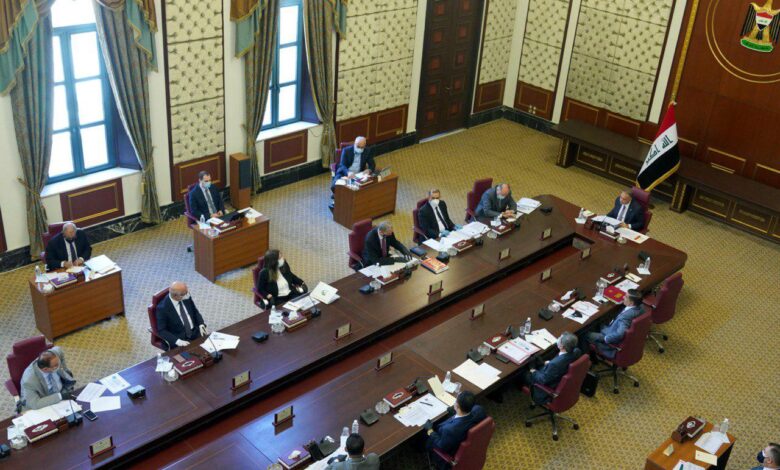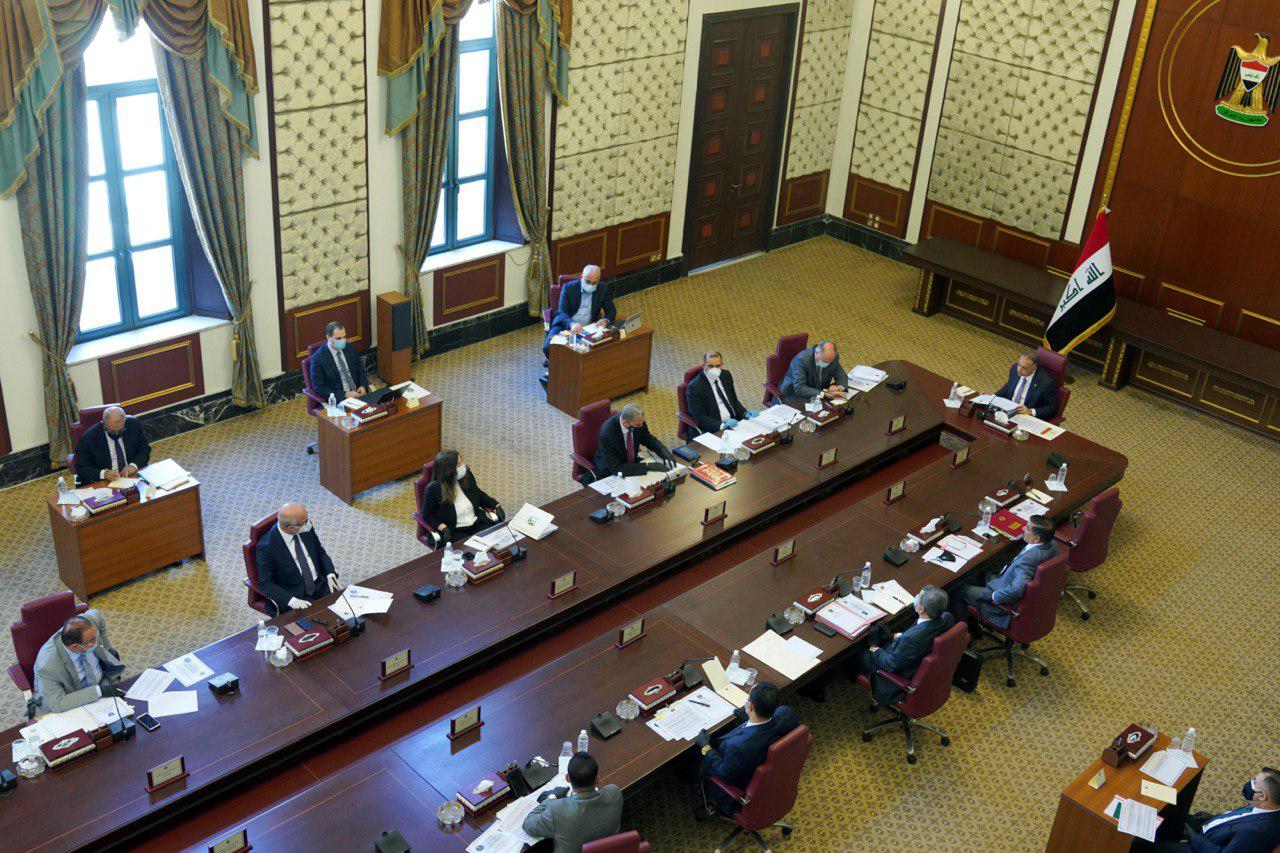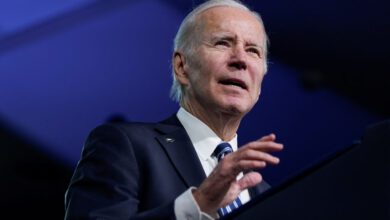
Fiscal Nerds Determine US Legislations Fate
Fiscal nerds determine the fate of legislation in America – it’s a statement that might sound dramatic, but it holds a surprising amount of truth. Behind the headlines and political maneuvering, a quiet army of budget analysts, economists, and data scientists are quietly shaping the laws that govern our nation’s finances. Their analyses, models, and interpretations of data profoundly impact everything from tax policy to infrastructure spending, often without the public even realizing it.
This post delves into the often-overlooked world of these fiscal power brokers and their significant influence on American policy.
We’ll explore how these “fiscal nerds” use economic modeling, data analysis, and lobbying efforts to influence legislative decisions. We’ll examine the role of partisanship, the challenges of communicating complex financial issues to the public, and the crucial importance of long-term fiscal sustainability. Get ready to discover the hidden hand shaping the financial future of the United States!
The Influence of Budget Analysts on US Legislation
Budget analysts play a crucial, often unseen, role in shaping US legislation. Their expertise in fiscal matters influences the creation, modification, and ultimate fate of bills impacting the nation’s finances. Understanding their influence requires examining their diverse roles, expertise, and positions within the government’s structure.
The Role of Budget Analysts in the Legislative Process
Budget analysts are essentially financial interpreters for the legislative and executive branches. They analyze the economic implications of proposed legislation, providing crucial information to policymakers. This analysis encompasses forecasting the budgetary impact, identifying potential unintended consequences, and evaluating the efficiency and effectiveness of proposed spending programs. Their work informs decisions about resource allocation, policy prioritization, and overall fiscal sustainability.
Without their insights, lawmakers would be navigating a complex financial landscape largely blind.
Types of Budget Analysts and Their Areas of Expertise
Budget analysts come from diverse backgrounds and possess specialized skills. Within the government, we find Congressional Budget Office (CBO) analysts focusing on macroeconomic forecasts and the budgetary implications of proposed legislation. The Office of Management and Budget (OMB) employs analysts who specialize in agency-specific budgeting and the execution of the President’s budget. Furthermore, many private sector firms employ budget analysts with expertise in specific policy areas like healthcare, defense, or education.
These private analysts often provide independent assessments and analysis, supplementing the information available to government officials. Finally, many non-profit organizations employ analysts who focus on specific policy areas and offer alternative perspectives on budget proposals.
Comparison of Analyst Influence in the Executive and Legislative Branches
Analysts in the executive branch, primarily within the OMB, directly influence the President’s budget proposal. Their recommendations shape the administration’s policy priorities and funding requests. Conversely, analysts in the legislative branch, most notably the CBO, provide independent analyses to Congress, helping lawmakers assess the budgetary impact of proposed legislation and providing an alternative perspective to the executive branch’s proposals.
While both exert significant influence, the OMB’s analysts operate more directly within the executive branch’s decision-making process, while the CBO’s analysts aim for non-partisan analysis to support Congressional decision-making. The influence of private sector and non-profit analysts is primarily indirect, shaping public discourse and informing the arguments of policymakers.
Stages of Legislation Where Budget Analysts Exert Influence
The influence of budget analysts permeates the entire legislative process. Their input is critical at multiple stages, shaping the trajectory of a bill from its initial conception to its final enactment (or defeat).
| Stage of Legislation | Analyst Involvement | Examples | Potential Impact |
|---|---|---|---|
| Bill Drafting/Proposal | Providing cost estimates, identifying potential funding sources | OMB analysts assisting in crafting the President’s budget proposal; CBO providing preliminary cost estimates for proposed legislation | Shapes the initial design and feasibility of the legislation |
| Committee Hearings | Testifying on the budgetary implications, answering questions from lawmakers | CBO Director presenting testimony before a Senate committee; OMB representatives explaining the administration’s position on a bill’s cost | Influences committee decisions on whether to advance the bill |
| Floor Debate/Amendments | Providing updated cost estimates for proposed amendments, highlighting potential fiscal consequences | CBO rapidly analyzing the impact of proposed amendments during floor debate | Shapes the final form of the legislation and its budgetary impact |
| Post-Enactment Review | Analyzing the actual costs and effectiveness of implemented legislation | CBO and GAO conducting post-implementation reviews of enacted laws | Informs future legislation and budget decisions |
Economic Modeling and Policy Decisions

Economic models are crucial tools used by policymakers to predict the likely effects of proposed legislation. These models, ranging from simple to incredibly complex, attempt to quantify the impact of policy changes on various economic indicators, such as GDP growth, inflation, employment, and income distribution. Understanding the strengths and weaknesses of these models is vital for informed decision-making.
Types of Economic Models Used in Policy Analysis
A variety of economic models are employed to assess the potential impact of legislation. These include macroeconomic models, which focus on aggregate economic variables; microeconomic models, which examine the behavior of individual agents (consumers, firms); and computable general equilibrium (CGE) models, which simulate the interactions between different sectors of the economy. Each model type has its own strengths and limitations, making the choice of model dependent on the specific policy question being addressed.
For example, analyzing the impact of a tax cut on overall economic growth might use a macroeconomic model, while evaluating the effect of a new regulation on a specific industry might require a microeconomic or CGE model. The selection process often involves considering data availability, computational feasibility, and the desired level of detail.
Limitations and Potential Biases in Economic Models
Economic models are inherently simplified representations of reality. They rely on assumptions about human behavior, technological progress, and other factors that are difficult, if not impossible, to perfectly capture. This can lead to significant limitations and potential biases. For instance, models often assume rational behavior by economic agents, which may not always hold true in practice. Data limitations also pose a challenge, as accurate and comprehensive data are not always available, especially for emerging markets or niche sectors.
Furthermore, the choice of model parameters and assumptions can significantly influence the results, potentially reflecting the biases of the modelers themselves. The complexity of these models also means that even minor changes in assumptions can lead to drastically different outcomes.
Examples of Flawed Economic Modeling Influencing Legislative Outcomes
History provides numerous examples where flawed economic modeling has led to unintended consequences. The Laffer Curve, which suggests that reducing tax rates can actually increase tax revenue under certain conditions, is a prime example. While theoretically plausible, its application in practice has often yielded mixed results, with some tax cuts leading to increased revenue and others leading to significant revenue shortfalls.
It’s crazy how often seemingly obscure budget details decide the fate of major legislation in America – real fiscal nerds are the unsung heroes (or villains, depending on your perspective!). Thinking about the meticulous planning and immense human cost involved in historical events like the Normandy landings, as detailed in this excellent article remembering the normandy landings , makes you appreciate the weight of even seemingly small decisions.
Similarly, those seemingly dry budget numbers hold enormous consequences, shaping our lives in ways we often don’t realize.
Similarly, projections of the impact of the 2008 economic stimulus package varied widely depending on the underlying economic model used, highlighting the uncertainty inherent in these forecasting exercises. These instances demonstrate the importance of transparency and critical evaluation of the models used in policy analysis.
Hypothetical Scenario: Minimum Wage Increase
Consider a proposed increase in the minimum wage. One model, focusing on the impact on employment, might predict significant job losses due to increased labor costs, particularly in low-skill sectors. This model might rely on a neoclassical framework emphasizing the substitution effect of labor. Conversely, another model, incorporating Keynesian principles and emphasizing the multiplier effect of increased consumer spending, might predict a minimal impact on employment, or even a slight increase, due to the boost in aggregate demand generated by higher wages.
Seriously, the way fiscal nerds dissect every budget line item, you’d think they were performing brain surgery. Their analyses often decide the fate of legislation in America, shaping everything from infrastructure spending to tax policy. But sometimes I wonder if they could apply their meticulous approach to something a little less…serious, like using their number-crunching skills to expand on the applications of the Big Mac Index, as outlined in this fascinating article: an alternative use for the economists big mac index.
Perhaps then we could better understand the real-world impact of these fiscal decisions on everyday Americans, influencing how these “fiscal nerds” determine the fate of future legislation.
This model might incorporate factors such as reduced employee turnover and improved productivity. These differing predictions, stemming from different underlying economic assumptions, would naturally lead to opposing policy recommendations. The first model might argue against the minimum wage increase, while the second might advocate for it. The choice between these competing models, and therefore the policy decision, hinges on which assumptions are deemed more realistic and relevant in the specific economic context.
The Role of Data and Evidence in Shaping Legislation

Data and evidence are the cornerstones of effective policymaking. Fiscal analysts, armed with rigorous methodologies and access to a vast array of information, play a crucial role in translating complex data into actionable insights that inform legislative decisions. Their work helps policymakers understand the potential impacts of proposed legislation, allowing for more informed and evidence-based choices.
Key Data Sources Used by Fiscal Analysts
Fiscal analysts draw upon a diverse range of data sources to support their analyses. These sources provide the raw material for understanding the economic and social landscape and projecting the likely consequences of policy changes. The reliability and comprehensiveness of these sources directly influence the quality and credibility of the resulting policy recommendations.
- Governmental Data: This includes data from agencies like the Congressional Budget Office (CBO), the Bureau of Economic Analysis (BEA), the Bureau of Labor Statistics (BLS), and the Internal Revenue Service (IRS). These agencies collect and publish a wealth of information on topics ranging from national income and product accounts to employment statistics and tax revenue. The CBO, for example, provides independent analyses of the budgetary impact of proposed legislation, a crucial input for Congressional decision-making.
- Academic Research: Peer-reviewed academic studies offer valuable insights into various economic and social phenomena. These studies often employ sophisticated econometric techniques to analyze complex relationships and provide evidence-based conclusions. For example, research on the effectiveness of different social programs can inform policy decisions about welfare and education.
- Private Sector Data: Data from private sector sources, such as financial institutions and market research firms, can provide additional context and perspectives. Information on consumer spending, investment trends, and corporate profits can be used to assess the macroeconomic environment and the potential impacts of policy changes on the private sector.
Methods Used to Analyze and Interpret Data
The analysis of data used in policymaking is not a simple process; rather, it involves a complex interplay of statistical techniques, economic modeling, and careful interpretation. The goal is to extract meaningful insights from the data and translate them into clear and concise policy recommendations.
- Econometric Modeling: This involves using statistical techniques to estimate the relationships between different economic variables. For example, analysts might use regression analysis to assess the impact of a tax cut on economic growth. These models, however, are only as good as the underlying data and assumptions, and their results should be interpreted cautiously.
- Cost-Benefit Analysis: This technique involves comparing the costs and benefits of a particular policy option. This can be a challenging task, as it requires assigning monetary values to both tangible and intangible outcomes. For example, the cost-benefit analysis of a new infrastructure project would need to consider the costs of construction and maintenance against the benefits of improved transportation and economic activity.
- Scenario Planning: This involves developing different scenarios based on various assumptions about future conditions. This allows analysts to explore the potential impacts of a policy under different circumstances. For example, analysts might model the effects of a new environmental regulation under different assumptions about future energy prices and technological advancements.
Comparing Quantitative and Qualitative Data in Policy Analysis
Quantitative data, expressed numerically (e.g., GDP growth, unemployment rates), and qualitative data, expressed descriptively (e.g., interview transcripts, case studies), offer complementary perspectives in policy analysis. While quantitative data provides precise measurements, qualitative data offers richer context and understanding of the underlying mechanisms. Effective policy analysis often integrates both types of data for a more comprehensive picture.For example, while quantitative data might show a correlation between education levels and income, qualitative data from interviews with individuals could illuminate the specific pathways through which education affects economic outcomes.
A purely quantitative analysis might miss the nuanced realities revealed by qualitative research. Similarly, qualitative findings need to be grounded in quantitative evidence to avoid subjective biases. The combined use of both strengthens the overall policy recommendations.
The Presentation of Data and its Influence on Legislative Outcomes
The way data is presented can significantly influence legislative outcomes. Clear, concise, and visually appealing presentations are more likely to resonate with policymakers and the public. The use of charts, graphs, and tables can help to convey complex information effectively. However, it’s crucial to avoid misleading or manipulative presentations. Transparency and methodological rigor are essential to maintaining the credibility of the analysis.For instance, choosing an appropriate scale on a graph can dramatically alter the perceived impact of a policy change.
A misleading graph could exaggerate or downplay the significance of the results, influencing the policy decision in a potentially unintended way. Conversely, a well-designed presentation can effectively communicate the importance of data-driven policymaking, fostering a more informed and evidence-based legislative process. The use of clear and concise language, avoiding technical jargon, also contributes to better understanding and acceptance of policy recommendations.
Lobbying and Advocacy by Fiscal Experts: Fiscal Nerds Determine The Fate Of Legislation In America

Fiscal experts, wielding their knowledge of economic principles and data analysis, play a significant role in shaping US legislation. Their influence, however, isn’t solely exerted through academic publications or government reports; it often involves direct engagement in the lobbying and advocacy process. This engagement can significantly impact the success or failure of proposed fiscal policies.The strategies employed by fiscal experts to influence legislative decisions are multifaceted.
They often work within think tanks, universities, or consulting firms, providing research and analysis to policymakers and interest groups. This research might include detailed cost-benefit analyses of proposed legislation, projections of economic impacts, or evaluations of existing programs. Experts may also testify before congressional committees, participate in public forums, and draft policy papers aimed at shaping the narrative around specific fiscal issues.
Direct lobbying, though less common for pure academics, can also involve meetings with legislators and their staff to present arguments and data supporting their preferred policy outcomes.
Approaches of Different Interest Groups
Different interest groups employ varying approaches to advocate for their policy preferences. For example, business-oriented groups may focus on highlighting the potential economic benefits of tax cuts or deregulation, emphasizing job creation and investment. Labor unions, conversely, might emphasize the importance of social safety nets and investments in infrastructure, highlighting the benefits for workers and the broader economy.
It’s crazy how much power these fiscal nerds wield in Washington; they’re the ones crunching the numbers that ultimately decide the fate of legislation. But the political landscape is shifting, and to understand the GOP’s future, you really need to check out this article on why MAGA is more than just a current trend: why maga is the future not just present of the gop.
Ultimately, though, even the most powerful political movements have to grapple with the cold, hard facts these number-crunchers present.
Environmental groups might focus on the economic costs of climate change and the benefits of investing in renewable energy. These diverse approaches reflect the varying priorities and perspectives of different stakeholders. The effectiveness of each approach depends on the specific context, the political climate, and the persuasiveness of the arguments presented.
Examples of Successful and Unsuccessful Lobbying Efforts
The Tax Cuts and Jobs Act of 2017 provides a compelling example of successful lobbying. Numerous think tanks and business organizations heavily advocated for the significant tax cuts included in the legislation, arguing that they would stimulate economic growth. While the long-term economic impacts remain debated, the successful passage of the act demonstrates the power of concerted lobbying efforts by business-aligned groups.
Conversely, proposals for large-scale public works projects or expansions of social safety nets have often faced significant resistance, demonstrating the challenges of advocating for policies that may not be perceived as directly beneficial to powerful interest groups. The consistent failure to pass comprehensive climate change legislation despite overwhelming scientific consensus and advocacy from environmental groups exemplifies the difficulty of overcoming entrenched political opposition.
A Narrative Illustrating the Interplay Between Fiscal Experts, Lobbyists, and Lawmakers
Imagine a scenario where a group of fiscal experts at a prominent think tank produce a comprehensive report detailing the economic benefits of investing in early childhood education. This report, based on rigorous data analysis, becomes the cornerstone of a lobbying campaign undertaken by a coalition of advocacy groups. Lobbyists use the report’s findings to meet with congressional staff, providing briefings and answering questions.
They also arrange meetings with key lawmakers, emphasizing the report’s conclusions and highlighting the potential for bipartisan support. The lawmakers, influenced by the report’s data, the advocacy group’s lobbying efforts, and perhaps public opinion, ultimately incorporate elements of the early childhood education proposal into a larger budget bill. This narrative demonstrates how fiscal expertise, strategic lobbying, and political will can combine to shape legislative outcomes.
Public Perception and Fiscal Policy Debates
Public opinion significantly shapes the political landscape, and fiscal policy is no exception. The way the public perceives issues like taxation, government spending, and the national debt directly impacts the likelihood of certain legislative proposals succeeding or failing. Understanding this dynamic is crucial for policymakers, economists, and anyone interested in the intricacies of American governance.Public perception of fiscal issues influences legislative outcomes through various channels.
For example, strong public support for a particular program, like infrastructure investment, can create political pressure on legislators to approve funding. Conversely, widespread negative sentiment towards tax increases can lead to legislative gridlock, even if economists argue such measures are necessary. This influence operates not only on individual politicians but also on the broader political climate, influencing the platforms of political parties and the overall political discourse.
The Media’s Role in Shaping Public Understanding of Fiscal Policy
The media plays a powerful role in shaping how the public understands and reacts to fiscal policy debates. News coverage, opinion pieces, and even entertainment programming can frame complex economic concepts in ways that either promote or hinder public support for specific policies. For instance, repeated negative portrayals of government debt can foster public anxiety and resistance to government spending, even if the debt is manageable within a broader economic context.
Conversely, positive media coverage of successful government initiatives can increase public trust and support for future spending programs. The media’s ability to simplify complex information—sometimes at the cost of accuracy or nuance—makes it a crucial, if sometimes problematic, actor in this arena.
Challenges in Communicating Complex Fiscal Issues to a Broad Audience
Communicating complex fiscal issues to the general public presents significant challenges. Economic concepts like inflation, deficits, and national debt are inherently abstract and often require specialized knowledge to fully grasp. Moreover, the language used in fiscal policy discussions can be highly technical and inaccessible to non-experts. This complexity creates an environment where misinformation and oversimplification can thrive, leading to a distorted public understanding of crucial issues.
Furthermore, differing political viewpoints often present conflicting interpretations of the same data, further complicating public comprehension. Effective communication requires finding a balance between accuracy and accessibility, which is a constant challenge.
Examples of Successful and Unsuccessful Public Communication Campaigns Related to Fiscal Policy
The success or failure of public communication campaigns often hinges on their ability to effectively convey complex information in a clear, concise, and relatable manner. A successful example might be a campaign explaining the long-term benefits of infrastructure investment, using clear visuals and relatable examples to demonstrate its impact on jobs and economic growth. Such a campaign would avoid jargon and focus on tangible outcomes.
In contrast, an unsuccessful campaign might be one that relies heavily on technical jargon or uses overly pessimistic or alarmist language to discuss national debt, thereby generating fear and confusion rather than understanding. The 2008 financial crisis and the subsequent debate over the economic stimulus package illustrate both successful and unsuccessful communication strategies, with some initiatives effectively communicating the urgency of the situation while others failed to connect with the public’s concerns and anxieties.
The Impact of Partisanship on Fiscal Policy Decisions
Partisan politics significantly shapes the landscape of fiscal policy in the United States, influencing how data is interpreted, policies are formulated, and ultimately, how legislation progresses. The inherent differences in ideological approaches between the major parties lead to contrasting fiscal priorities and strategies, often resulting in gridlock and delayed action on critical issues.The influence of partisan politics on the interpretation and use of fiscal data is profound.
Different parties often highlight data that supports their pre-existing policy preferences, selectively emphasizing certain economic indicators while downplaying others. For example, debates surrounding tax cuts often see Republicans emphasizing potential economic growth spurred by increased investment, while Democrats might focus on the potential increase in income inequality or the national debt. This selective use of data fuels partisan narratives and hinders objective analysis.
Differing Approaches to Fiscal Policy
Republicans generally favor lower taxes and reduced government spending, often advocating for supply-side economics, believing tax cuts stimulate economic growth. They tend to prioritize balanced budgets through spending cuts rather than tax increases. Democrats, conversely, typically favor increased government spending on social programs and infrastructure, believing in the role of government intervention to address social and economic inequalities.
They are more inclined to raise taxes on higher earners to fund these programs. These fundamental differences shape their approaches to budgeting and fiscal policy legislation.
Instances of Partisan Gridlock on Fiscal Issues
The failure to pass a comprehensive budget on time is a recurring example of partisan gridlock. The process often involves lengthy negotiations, compromises, and potential government shutdowns, as each party attempts to advance its own fiscal agenda. For instance, debates surrounding the debt ceiling have frequently resulted in brinkmanship and last-minute compromises, reflecting the deep divisions between the parties on fiscal matters.
Similarly, disagreements over tax reform, healthcare spending, and infrastructure investment often lead to protracted legislative battles, with the final outcome often reflecting a compromise that satisfies neither party fully.
Consequences of Extreme Partisan Polarization
Extreme partisan polarization significantly hinders effective fiscal policymaking. The inability to reach bipartisan consensus results in delayed or ineffective responses to economic challenges. For example, the lack of agreement on long-term fiscal solutions to address the rising national debt could lead to future economic instability. Moreover, the constant political battles surrounding fiscal issues can erode public trust in government and institutions, further exacerbating political polarization and hindering effective governance.
The focus shifts from addressing national needs to partisan point-scoring, ultimately harming the overall well-being of the nation.
Long-Term Fiscal Sustainability and Legislative Choices
Ensuring long-term fiscal sustainability is a monumental challenge for any nation, particularly one as complex as the United States. The interplay of burgeoning entitlement programs, fluctuating economic cycles, and unpredictable global events creates a constantly shifting landscape for policymakers. Understanding this complexity and navigating the political pressures involved requires a deep understanding of fiscal realities, a role expertly filled by budget analysts.The challenges associated with achieving long-term fiscal sustainability are multifaceted.
They stem from the growing burden of mandatory spending on programs like Social Security and Medicare, driven by an aging population and rising healthcare costs. Simultaneously, the need for infrastructure investment, national defense, and other essential government functions adds further pressure on the budget. These competing demands often lead to difficult choices, forcing policymakers to prioritize spending and potentially delay crucial investments.
Fiscal Analyst Contributions to Long-Term Planning, Fiscal nerds determine the fate of legislation in america
Fiscal analysts play a critical role in navigating this complex terrain. They develop sophisticated economic models to project future budget outcomes under various scenarios, incorporating assumptions about economic growth, inflation, and demographic trends. These models are essential tools for long-term planning, allowing policymakers to assess the potential consequences of different legislative choices. For instance, analysts might model the impact of raising the retirement age on Social Security solvency or the effects of increased infrastructure spending on economic growth and employment.
Their analyses provide crucial data-driven insights that inform policy debates and help lawmakers make informed decisions.
Examples of Legislative Actions (and Inactions)
The history of US fiscal policy offers numerous examples of legislative actions—and inactions—related to long-term fiscal sustainability. The 1986 Tax Reform Act, for example, aimed to simplify the tax code and boost economic growth, but its long-term impact on the budget deficit remains a subject of debate. Conversely, the failure to enact comprehensive entitlement reform has resulted in projected long-term deficits.
More recently, debates surrounding the Affordable Care Act highlighted the complexities of balancing healthcare access with budgetary constraints. These examples illustrate the challenges of enacting and sustaining long-term fiscal policies, often influenced by political considerations and differing economic forecasts.
Potential Consequences of Failing to Address Long-Term Fiscal Issues
Failure to address long-term fiscal challenges carries significant risks for the nation’s economic and social well-being.
Prolonged deficits can lead to higher interest rates, reduced investment, and slower economic growth. The accumulation of national debt can crowd out private investment, diminishing opportunities for innovation and job creation. Moreover, unsustainable fiscal trajectories can threaten the solvency of vital social security and healthcare programs, potentially leading to benefit cuts or tax increases that disproportionately affect vulnerable populations.
A spiraling national debt can erode confidence in the US dollar, impacting its value and potentially destabilizing the global financial system.
The consequences extend beyond economics; they impact social stability and national security, potentially creating a climate of uncertainty and hindering long-term planning for crucial public services. Addressing these issues requires a commitment to evidence-based policymaking, informed by the rigorous analysis of fiscal experts.
So, the next time you hear about a major piece of legislation, remember the “fiscal nerds.” Their work, though often unseen, is crucial to the process. Their expertise in economic modeling, data analysis, and understanding of complex financial systems allows them to predict the potential impacts of proposed laws. While their influence is not always transparent, understanding their role is essential to understanding the complexities of American politics and policymaking.
Ultimately, the fate of legislation in America rests not only on the shoulders of politicians, but also on the quiet calculations and insightful analyses of these unsung heroes of fiscal policy.




